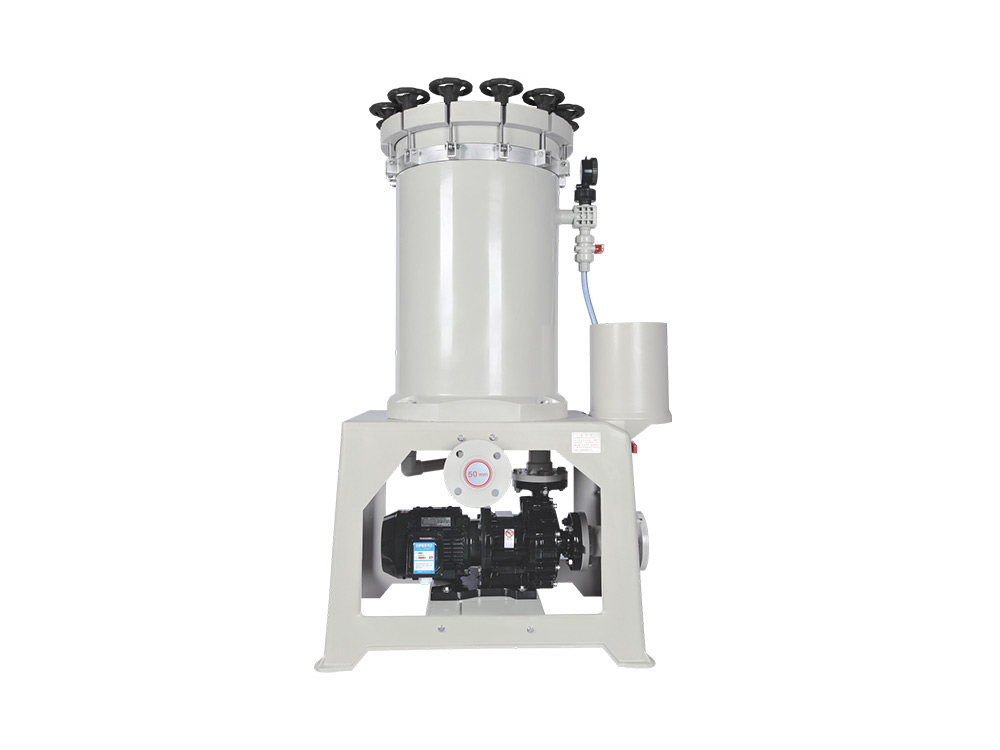
# Electroplating Chemical Filtration System Design and Optimization
Electroplating is a critical process in various industries, including automotive, electronics, and aerospace. The quality of the electroplated product heavily depends on the purity of the chemical solutions used. Contaminants in these solutions can lead to defects, reduced adhesion, and poor surface finish. Therefore, designing and optimizing an effective electroplating chemical filtration system is essential for maintaining high-quality standards.
## Importance of Filtration in Electroplating
Filtration plays a pivotal role in the electroplating process by removing particulate matter, organic contaminants, and other impurities from the plating solutions. These contaminants can originate from various sources, such as airborne particles, substrate materials, and chemical reactions. Without proper filtration, these impurities can cause defects like pitting, roughness, and uneven coating thickness.
### Types of Contaminants
– Particulate Matter: Dust, dirt, and metal particles.
– Organic Contaminants: Oils, greases, and other organic compounds.
– Ionic Impurities: Metal ions and other dissolved substances.
## Key Components of an Electroplating Chemical Filtration System
An effective filtration system for electroplating chemicals typically includes several key components:
### 1. Pre-Filters
Pre-filters are designed to remove larger particles and debris before the solution reaches the main filter. This step helps to extend the life of the primary filter and improve overall filtration efficiency.
### 2. Primary Filters
Primary filters are the main workhorses of the filtration system. They are designed to remove finer particles and contaminants. Common types include cartridge filters, bag filters, and membrane filters.
### 3. Activated Carbon Filters
Activated carbon filters are used to remove organic contaminants and certain ionic impurities. They are particularly effective in improving the clarity and purity of the plating solution.
### 4. Final Polishing Filters
Final polishing filters are used to remove any remaining fine particles and ensure the highest level of purity. These filters often have very fine pore sizes and are crucial for achieving a high-quality finish.
## Design Considerations
When designing an electroplating chemical filtration system, several factors must be considered to ensure optimal performance:
### 1. Flow Rate
The flow rate of the plating solution through the filtration system must be carefully controlled. Too high a flow rate can reduce filtration efficiency, while too low a flow rate can lead to inadequate filtration.
### 2. Filter Media
The choice of filter media is critical. Different media are suited for different types of contaminants. For example, cellulose filters are effective for particulate matter, while activated carbon is better for organic contaminants.
### 3. System Configuration
The configuration of the filtration system, including the arrangement of pre-filters, primary filters, and polishing filters, must be optimized to achieve the desired level of filtration without causing excessive pressure drops or flow restrictions.
### 4. Maintenance and Replacement
Regular maintenance and timely replacement of filter elements are essential to maintain the efficiency of the filtration system. Clogged or worn-out filters can lead to reduced filtration performance and potential contamination of the plating solution.
## Optimization Techniques
Optimizing an electroplating chemical filtration system involves several strategies to enhance performance and extend the life of the system:
### 1. Automated Monitoring
Implementing automated monitoring systems can help in real-time tracking of filter performance and contamination levels. This allows for timely maintenance and replacement of filters, ensuring consistent filtration quality.
### 2. Multi-Stage Filtration
Using a multi-stage filtration approach can significantly improve the overall efficiency of the system. Each stage targets specific types of contaminants, ensuring comprehensive purification of the plating solution.
### 3. Regular Testing and Analysis
Regular testing and analysis of the plating solution can help in identifying the types and levels of contaminants present. This information can be used to fine-tune the filtration system and select the most appropriate filter media.
### 4. Energy Efficiency
Optimizing the energy consumption of the filtration
Keyword: electroplating chemical filter
